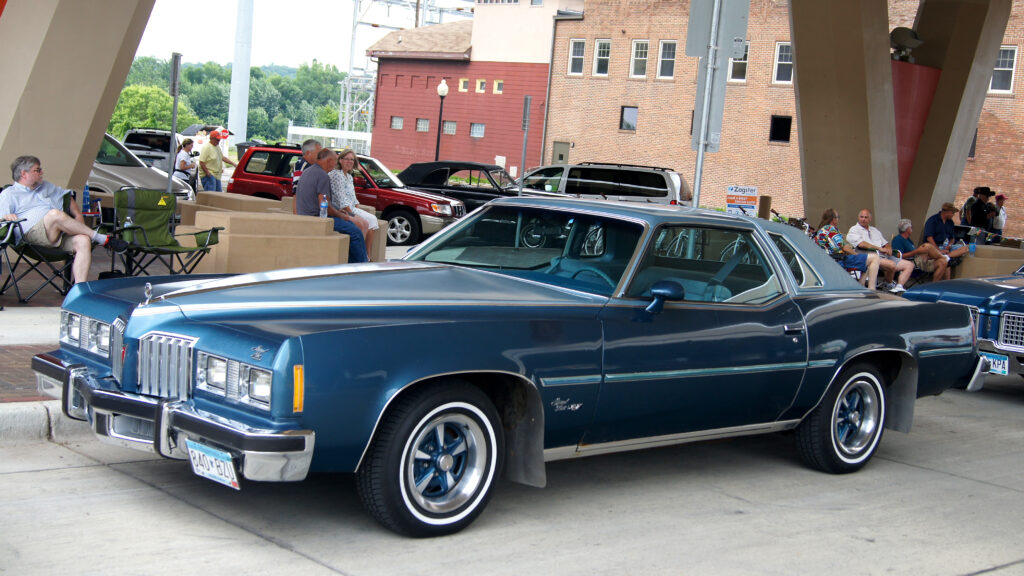
The perception that car repair and maintenance invariably lead to exorbitant costs is a common one, but it doesn’t have to be your reality. With a dedicated investment of your time to grasp the fundamentals of basic repairs, you stand to save a substantial sum that would otherwise be spent at the mechanic. These aren’t obscure, highly technical procedures; rather, they are straightforward tasks that, with a little practice, will become second nature, deepening your familiarity with your vehicle’s intricate systems and better equipping you to anticipate and plan for more significant fixes, such as a new battery.
Indeed, these hands-on opportunities are well worth the effort. Keeping a ready stock of essential fluids and filters, along with a few basic tools, can transform your garage into an amateur mechanic’s paradise. Not only will you keep your own vehicle in peak condition, but consistent practice might also find friends and family seeking your expertise and advice for their own automotive needs. Modern vehicles, with all their sensors and service alerts, still benefit immensely from an owner who understands these foundational maintenance skills.
We’ve carefully compiled 14 maintenance tasks that are not only manageable for the average car owner but are also absolutely essential for extending your vehicle’s life, improving its safety, and boosting your confidence behind the wheel. In this first segment, we will delve into the seven most fundamental tasks, covering everything from the engine’s core health to the clarity of your view and the integrity of your car’s exterior. Mastering these will lay a robust foundation for years of reliable driving.

1. **Engine Oil & Filter Changes: The Lifeblood of Your Engine**Changing your engine oil and filter stands as one of the most common and undeniably crucial car maintenance tasks. This seemingly simple procedure reduces friction between moving parts and plays an indispensable role in preventing engine overheating. Over time, engine oil degrades and loses its effectiveness, leading to increased wear and tear if not addressed. Adhering to your vehicle manufacturer’s specified intervals for oil and filter changes is paramount for maintaining engine health and ensuring its longevity.
While the direct monetary savings from performing an oil change yourself might not always be substantial compared to taking it to a quick-lube shop, there are compelling reasons to take on this task. First and foremost, doing it yourself guarantees that you know precisely the quality and type of oil that goes into your engine, eliminating any guesswork. This control ensures your engine receives the exact lubrication it needs, fostering optimal performance.
Beyond the quality assurance, performing your own oil change offers a unique opportunity to inspect other critical components underneath your vehicle. As you loosen and tighten the drain plug, you’re positioned to cast an eye over various parts, potentially spotting leaks, loose connections, or unusual wear that might otherwise go unnoticed. This preventative reconnaissance can catch small issues before they escalate into costly problems, making the DIY oil change a valuable diagnostic step.
Furthermore, remember that low oil levels can quickly destroy your engine, and relying solely on a warning light to alert you can be a risky gamble. Learning how to accurately check the dipstick (or dashboard readout on newer models) and top up your oil with the correct type for your car is a quick, clean process that prevents catastrophic damage. According to OilChangers.com, developing a habit of checking your oil once a month, or before any long trip, takes less than five minutes and is a fundamental aspect of basic maintenance that remains one of the most important.
Having a small funnel and a spare quart of the correct oil in your trunk is a practical step that can prevent being stranded or incurring significant engine damage. This simple readiness transforms a potential roadside emergency into a minor, manageable top-off. Prioritizing regular oil and filter changes is an investment in your vehicle’s heart, ensuring it beats strongly for years to come.

2. **Comprehensive Fluid Management: Checking, Swapping, and Topping Off Critical Liquids**Your vehicle is a complex ecosystem of moving parts, and its smooth operation hinges on a variety of fluids, each with a specific and crucial role. Monitoring and changing these fluids regularly is a maintenance pillar you simply cannot afford to skip. While dealerships and mechanics can handle these tasks, performing these relatively easy checks and changes yourself will not only save you money but also build a deeper understanding of your car’s operational health. With a little practice, these essential checks become second nature.
Several standard fluids demand your attention. Engine oil, as discussed, is paramount, and should be checked with the engine off and the vehicle on a level surface. Similarly, brake fluid and power steering fluid levels also need to be checked when the engine is off. Automatic transmission fluid, however, is unique; it requires checking with the engine running, ideally after 10 or 15 minutes of driving to ensure it’s at operating temperature. Ideally, a weekly fluid check routine is a golden standard for vehicle owners who want to stay ahead of potential issues.
Power steering fluid, lacking test strips for quick assessment, typically relies on manufacturer service recommendations or a general rule-of-thumb, often around two years or 24,000 miles. A common DIY method for refreshing this fluid is the “turkey baster method.” With the engine off, you suck out the old fluid from the reservoir. Then, refill with fresh, recommended fluid. Start the engine for about 15 seconds, and repeat this swap procedure until you’ve used a full quart. A critical note: never substitute a “universal” power steering fluid for the type specifically recommended for your vehicle, and absolutely avoid “miracle” additives or stop-leak products, as they can lead to expensive failures by clogging fine mesh filter screens within your steering system.
Brake fluid also warrants regular attention. While some carmakers suggest replacement every two years or 24,000 miles, others omit this recommendation. Fortunately, you can easily test its condition by dipping a test strip into the fluid and comparing the color to the chart on the packaging. While a complete brake fluid flush is best left to professionals, a “fluid swap” is an effective DIY alternative. Use a dedicated baster (never the same one used for power steering fluid, as they are incompatible) to suck out the dark brown fluid from the reservoir, squirting it into a recycling bottle. Refill with fresh brake fluid, drive for a week to allow it to mix, and then repeat the procedure several times over subsequent weeks until the fluid in the reservoir maintains a light honey color. Be cautious not to suck the fluid all the way into the baster’s rubber bulb, as brake fluid can damage it.
Transmission fluid, like engine oil, is essential but often overlooked. Some transmission oil pans feature a convenient drain plug, while others necessitate removing the entire pan to drain the oil—a more cumbersome process. If you face the latter, consider installing a retrofit drain plug after the initial removal; this small upgrade will make all subsequent fluid changes significantly easier. This same retrofit plug can also be a savior if your engine oil pan plug ever gets stripped from use. These critical fluids, including coolant, each play a vital role, and low levels can lead to overheating, transmission issues, or even complete brake failure. Regular checks and topping off or replacing them as needed is a simple, yet highly effective, strategy to prevent costly repairs and ensure your vehicle runs smoothly for the long haul.

3. **Tire Pressure Monitoring & Basic Inspection: Ensuring Optimal Grip and Longevity**Maintaining the correct tire pressure is far more than just a matter of convenience; it is absolutely critical for both your safety on the road and the lifespan of your tires. Under-inflated tires are a significant hazard, leading to uneven wear patterns, a reduction in your vehicle’s fuel efficiency, and a heightened risk of a dangerous blowout. Conversely, over-inflated tires can result in a harsh, uncomfortable ride and a decrease in traction, compromising your car’s handling capabilities.
Every responsible driver should own a basic tire pressure gauge and be familiar with how to use the air pumps readily available at most gas stations. This simple tool empowers you to perform regular checks, which should be done at least once a month and crucially before embarking on any long trips. The recommended PSI (pounds per square inch) for your specific vehicle is not a mystery; it’s typically listed on a sticker located inside the driver’s side door jamb or in your vehicle’s owner’s manual.
Checking tire pressure is particularly important when temperatures change, as AutoFair Subaru recommends. Significant fluctuations in ambient temperature can affect tire pressure, requiring adjustments to maintain optimal levels. Proper tire pressure doesn’t just contribute to safety; it actively enhances your car’s handling, significantly extends the life of your tires by promoting even wear, and saves you money at the pump through improved gas mileage.
Beyond pressure, a quick visual inspection of your tires can reveal early warning signs of trouble. Look for any visible damage, such as bulges, cracks, or embedded objects like nails or screws. Uneven wear patterns, particularly on one side of the tread or across the entire surface, can indicate underlying issues like misalignment or improper inflation, signaling that it might be time for a professional rotation or alignment check. This proactive approach to tire care ensures your most vital connection to the road remains reliable and efficient.

4. **Wiper Blade Replacement: Maintaining Crystal Clear Visibility**Worn-out wiper blades are an often-overlooked safety hazard that can significantly compromise your visibility during adverse weather conditions like rain or snow. If your wiper blades are streaking across the windshield, making squeaking noises, or simply failing to clear water effectively, it’s a clear signal that they are past their prime and need immediate replacement. This isn’t just about aesthetics; it’s about maintaining a clear line of sight, which is fundamental to safe driving.
Fortunately, replacing wiper blades is among the easiest and most straightforward car maintenance tasks you can undertake yourself. Most modern blades feature a simple latch or clip system that makes removal and installation a breeze. While many auto parts stores, and even big-box retailers, offer free installation when you purchase new blades, knowing how to do it yourself provides invaluable self-reliance and convenience, particularly if you find yourself needing a replacement when professional help isn’t readily available.
When you’re swapping out the old blades for new ones, a crucial tip is to maintain a firm grip on the wiper arm after removing the old blade. If the arm slips from your grasp, it can spring back with enough force to strike and potentially crack your windshield, turning a simple fix into a much more expensive problem. Always ensure you purchase blades that correctly match the specified lengths for your vehicle, as an ill-fitting blade will not perform optimally.
According to Ford, a good rule of thumb is to replace your wipers once or twice a year, depending on your usage, local weather conditions, and how much exposure your vehicle gets to harsh elements. This regular replacement schedule ensures your windshield remains consistently clear, drastically improving your safety and confidence when the weather takes a turn for the worse. It’s a small investment in time and money that yields significant safety dividends.

5. **Proactive Battery Care: Testing, Replacement, and Emergency Jump-Starting**A dead battery is a universally frustrating experience, capable of stranding you at the most inconvenient times. The good news is that you possess the ability to manage and even preempt this common annoyance through proactive battery care. Making regular battery testing a priority on your maintenance checklist provides crucial insights into its health, allowing you to anticipate when a replacement might be needed and budget accordingly, rather than being caught off guard.
All automotive batteries eventually reach the end of their lifespan, but accurately determining how close yours is to failing can be challenging without the right tools. This is precisely why battery testers were invented. These devices measure the battery’s capacity against its original design specifications, and crucially, they also provide insights into critical details such as voltage during engine start-up. Affordable, quality battery-testing gauges are widely available and offer invaluable information that helps ensure your vehicle remains reliably operational.
If your battery test results indicate it’s no longer holding a charge effectively, it’s time for a replacement. Most car batteries typically last about five years, assuming proper care and maintenance. The excellent news is that replacing your car battery is a surprisingly easy DIY fix, negating the need for a trip to the mechanic. Furthermore, most stores that sell new batteries offer complimentary recycling of your old one, making the entire process environmentally responsible and hassle-free. Regularly checking battery terminals for corrosion and cleaning them with a mixture of water and baking soda can also significantly extend its life by ensuring strong electrical connections.
Beyond routine care, knowing how to jump-start a car is an essential emergency skill every driver should possess. A dead battery can strike unexpectedly, but with a set of jumper cables or a portable jump starter in your trunk, you can quickly get back on the road. As Chapel Hill Tire outlines in their guides, the key is to connect the positive and negative clamps in the correct order and ensure both vehicles are completely off before initiating the connection process. Mastering this fundamental skill empowers you to overcome unexpected battery failures with confidence and self-reliance, rather than depending on roadside assistance.

6. **Optimizing Airflow: Engine & Cabin Air Filter Management for Performance and Comfort**Your vehicle relies on a sophisticated system of filters to keep various contaminants from disrupting its performance and your comfort. Effective filter management is a cornerstone of good repair and maintenance practice, ensuring that both your engine and your lungs breathe easy. Ignoring these filters can lead to decreased efficiency, accelerated wear, and even more costly repairs down the line.
The engine air filter plays a critical role in your engine’s health, acting as the first line of defense against dust, dirt, and other airborne debris. A clean air filter allows your engine to “breathe” properly, which directly translates to improved fuel efficiency and optimal overall performance. When this filter becomes clogged, your engine has to work significantly harder, leading to reduced power and the potential for long-term engine damage. Inspecting and replacing your engine air filter is a straightforward task: simply unscrew or unclip the air filter box retainers, remove the old filter, and hold a shop light behind it. If the filter blocks 50 percent or more of the light, it’s time for a new one. If sufficient light passes through, secure it back in place and keep driving. It’s truly one of the simplest things you can do to maintain your car’s vital components.
Equally important, though often overlooked, is the cabin air filter. This filter ensures that the air you breathe inside your vehicle is clean and free of pollen, dust, and pollutants. A clogged cabin air filter can have several negative consequences, including placing undue strain on your car’s blower motor, causing your AC system to run longer and harder, especially during warmer months, and significantly diminishing the air quality within your vehicle. Fortunately, accessing and replacing the cabin air filter is typically an easy process.
You can purchase a replacement cabin air filter at any auto parts store; don’t hesitate to ask the clerk for installation instructions, as locations can vary by vehicle model. In most late-model vehicles, cabin air filters are found in the air ducts behind the glove box, though some manufacturers place them in the cowling or console area. The procedure usually involves removing access covers, sliding out the old filter, and noting the direction of the airflow arrows to ensure the new filter is installed correctly. Once the new filter is in place, reinstall the covers, and you’ll immediately notice the difference in both your vehicle’s climate control efficiency and the freshness of your interior air. Both engine and cabin air filters are inexpensive to replace and offer substantial benefits for your vehicle’s performance and your personal comfort.

7. **Tackling Minor Paint Scratches & Dings: Protecting Your Car’s Finish and Value**Those inevitable nicks, scratches, minor dents, and door dings can quickly make your car appear older and more neglected than it actually is. Beyond the aesthetic drawbacks, these imperfections can compromise your vehicle’s protective clear coat and paint, potentially opening the door for rust and further damage. While serious body damage undoubtedly requires professional attention, you’ll be pleased to know that many minor marks are well within your capability to repair yourself, preserving your car’s appearance and its resale value.
Buffing out a paint scratch that hasn’t penetrated through the paint layers can feel like magic when done correctly. For these surface-level imperfections, a very fine abrasion technique can make them vanish. You can achieve impressive results using a mild auto body buffing compound applied with a moistened buffing pad, perhaps even with a 6-inch random orbit woodworking sander (fitted with a buffing pad instead of an abrasive disc, of course). After the buffing process, a thorough rinse will reveal a significantly improved, if not entirely blemish-free, finish. This method is far more detailed and effective for genuine scratches than quick fixes like nail polish or toothpaste, which might only temporarily mask the issue.
Fixing small dents and door dings also falls squarely into the DIY realm. If you’re comfortable patching a wall, you’re likely capable of patching a dent in your car. This task requires a few essential supplies: various sandpaper grits, a small can of autobody filler and cream paste, and plastic applicators. Begin by sanding the dent down to bare metal with a coarse-grit sandpaper, then feather the edges to create a smooth transition. Clean the area meticulously with a wax and grease remover to ensure proper adhesion.
Next, mix the body filler according to instructions and apply a very light skim coat to fill in any sandpaper scratches. Allow this layer to set up, then gradually build up the repair with additional layers, ensuring each application is no more than 1/4-inch thick. The final coat should be feathered meticulously to level with the surrounding painted areas. After the filler cures, sand it until it’s perfectly smooth. To address any tiny pinholes that might remain, apply a cream filler over the entire area, let it cure, and perform a final sanding. With the surface now perfectly prepped, you can apply touch-up paint, meticulously matching your car’s color to complete a repair that will significantly restore your vehicle’s appearance. This attention to minor cosmetic damage not only keeps your car looking sharp but also prevents the progression of rust, safeguarding its long-term integrity.”
, “_words_section1”: “2000

8. **Ensuring Wheel Security: Retorquing Lug Nuts and Basic Flat Tire Repair**Addressing wheel-related issues yourself can be empowering, saving you from roadside dilemmas. Two crucial tasks are ensuring lug nuts are properly torqued after reinstallation and performing basic flat tire repair. These enhance self-reliance on the road.
A flat tire can strike without warning, but many common punctures don’t need professional help. Tubeless tires allow minor repairs on the vehicle. Locate the leak by inflating and spraying with soapy water; bubbles indicate the spot.
If the leak is from a screw, nail, or simple hole in the tread, it’s a manageable DIY job. Safely jack the vehicle, place a safety block, extract the object, then use a plug kit and tire repair cement. Leaks at the rim, however, require a mechanic.
Beyond flats, re-torquing wheels is vital. After any wheel removal, check lug nut tightness after the first 50 miles using a torque wrench. Consult your vehicle’s manual for the precise specification. This simple check drastically reduces accident risk.

9. **Braking System Health: Understanding Pad Inspection and Timely Replacement**Your vehicle’s braking system is its most critical safety feature. Maintaining its health is paramount. Inspecting brake pads and knowing when replacement is due prevents costly damage and ensures uncompromised stopping power. Be attuned to your brakes’ cues.
Brake pad wear often signals with sound. Squealing usually indicates pads nearing end-of-life, suggesting a DIY pad replacement. Grinding means metal-on-metal contact, a serious issue requiring immediate mechanic attention to prevent rotor damage.
For those comfortable with a wrench, replacing brake pads yourself can be rewarding. With basic tools and a reputable tutorial, many car owners succeed. The task involves safely jacking, removing the wheel, compressing the caliper piston, and installing new pads, demanding attention to detail and safety.

10. **Vital Connections: Inspecting Belts & Hoses for Preventative Maintenance**Beneath your car’s hood, a network of belts and hoses are vital for smooth engine operation. They drive accessories and manage critical fluid flow. Neglecting them can lead to overheating or sudden breakdowns, making regular inspection a cornerstone of preventative maintenance.
Belts, like the serpentine belt, crack, fray, or glaze over time. These indicate a weakened belt prone to snapping, disabling key engine accessories. Visually inspect belts for imperfections, missing ribs, or looseness regularly.
Hoses transport fluids under varying temperatures and pressures. Over time, they can harden, crack, or swell, leading to leaks. Gently squeeze them for hardness, and look for cracks, bulges, or weeping. A leaking coolant hose can quickly cause severe engine damage.
Addressing these issues proactively saves significant repair costs. Replacing a worn belt or deteriorating hose is straightforward, far less expensive than an engine breakdown. With basic tools, these vital connections can be restored for efficient and reliable engine function.

11. **Igniting Efficiency: The Importance of Spark Plug Replacement**Spark plugs are foundational for your engine’s combustion, igniting the fuel-air mixture to generate power. Constant exposure to intense heat wears them out. Replacing them at recommended intervals directly impacts your vehicle’s efficiency, performance, and longevity.
Worn spark plugs manifest in various undesirable symptoms. Common indications include noticeable misfires, reduced engine performance, lack of power, and a significant drop in fuel economy. Rough idling and trouble starting can also stem from faulty spark plugs.
While delving into engine internals seems intimidating, replacing spark plugs is a task many car owners can undertake. It requires specific tools, like spark plug sockets. The methodical procedure involves carefully removing old plugs, inspecting them for wear, and then installing new, correctly gapped plugs, which can revitalize your engine.

12. **Smooth Operation: Lubricating Locks, Latches, and Window Tracks**Over time, your vehicle’s mechanical components—like door locks, hood latches, and window tracks—can succumb to wear, rust, and grime, leading to frustrating sticking issues. These minor annoyances can escalate. Ensuring their smooth operation is one of the fastest and most satisfying DIY maintenance tasks.
Door locks are delicate mechanisms often overlooked. To keep them operating freely, dry graphite powder is essential. Gently push back the dust protector flap, administer a quick pump of graphite, and work the lock with your key several times. Don’t forget your trunk lock!
A sticking hood latch is often due to rust and dryness. Remedy this with spray rust penetrant and white lithium grease. Saturate the latch mechanism with penetrant, then latch and unlatch several times until smooth. Follow with white lithium grease on all moving parts, repeating the latching to distribute it. This ensures easy engine access.
Finally, power windows benefit from periodic lubrication. If you notice dragging, noises, or sluggish operation, window tracks likely need attention. Silicone spray or similar lubricant works wonders. This intervention prevents frozen tracks, which strain motors and lead to expensive repairs.

13. **Preserving Interior Comfort: Deep Cleaning Carpets, Recesses, and Upholstery Repair**Your car’s interior endures significant wear, making cleanliness crucial for aesthetics, value, and comfort. From tears to ingrained dirt, these issues make your vehicle feel older. Many interior revitalization tasks are suited for DIY, saving substantial costs compared to professional services.
Seats, especially lighter colors, quickly show age. Minor tears in leather and vinyl are manageable at home with a repair kit: gluing reinforcing fabric, mixing heat-set filler, applying it, then heating a textured mat over it. With practice, you can improve torn seats.
Beyond repairs, routine cleaning and conditioning are paramount. Remove grime from leather with cleaner and a terry cloth, then apply conditioner to keep material supple. For carpets, a deep clean is possible with a rented carpet cleaning machine or a spray-on cleaner and scrub brush, refreshing your interior and eliminating odors.
Finally, true detailing means not forgetting recesses and trim lines. Wrap a cloth around a worn screwdriver (no sharp edges) and spray with all-purpose cleaner. Gently run it along trim lines to pick up grime. Clean buttons, controls, and finish with a rejuvenator for plastics. Fine brushes and disinfectant wipes are excellent for vents and dash.

14. **Exterior Protection: The Dual Benefits of Regular Washing and Waxing**Regular washing and waxing extend far beyond aesthetics; they are fundamental maintenance tasks crucial for protecting your car’s finish and preventing rust. These practices safeguard its long-term integrity and resale value. A clean and protected exterior is your car’s first line of defense against elements and contaminants.
Dirt, road salt, grime, and industrial fallout are corrosive agents that eat away at your vehicle’s clear coat and paint. This leads to rust, compromising structural integrity and incurring expensive repairs. Regular washing, especially during winter, is paramount for removing these harmful substances before they cause lasting damage. A thorough scrub makes a world of difference.
Beyond cleanliness, applying wax every few months provides essential sacrificial protection for your paintwork. Wax acts as a barrier, making it harder for dirt, moisture, and UV radiation to reach the paint. This layer helps bead water, makes subsequent washes easier, and preserves your car’s finish. Also, don’t forget top edges of windows; glass cleaner eliminates grime, adding a final polish. This dual approach forms a robust shield, extending your car’s life and retaining its curb appeal.
Mastering these simple, yet profoundly effective, maintenance tasks transforms you from a passive car owner into an empowered, proactive vehicle steward. From ensuring your wheels are secure to meticulously protecting your car’s interior and exterior, each DIY step contributes to a more reliable, safer, and ultimately longer-lasting driving experience. These aren’t just chores; they’re investments in your peace of mind and the enduring health of your trusted companion on the road. Embrace the wrenches, understand the fluids, and revel in the satisfaction of a well-maintained machine that serves you faithfully mile after mile.



